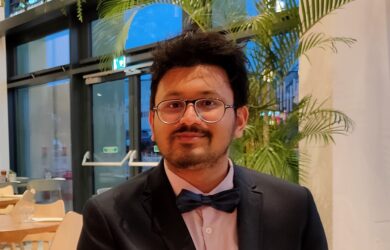
The first book to tell the cultural and agricultural history of the Afghan and Tajik Pamirs has been put together by Jamila Haider and a colleague.
The first book to tell the cultural and agricultural history of the Afghan and Tajik Pamirs has been published.
The book, With Our Own Hands, was put together by Gates Cambridge Alumna Jamila Haider and Frederik van Oudenhoven.
Through the lens of local recipes, stories, poems and essays, it describes Pamiri food and its origins, people’s daily lives, their struggles and celebrations. Jamila and Frederik say: “In a context where poverty, conflicts and political upheaval have made it difficult for people to express and define their identity, food becomes a powerful tool for its revival.”
The aim of the book is to strengthen the pride of the Pamiri people and excite the curiosity of those who appreciate diversity in food and agriculture and the role it plays in people’s relationships with nature and with each other.
Not only does it describe age-old traditions, but the Pamiri people’s responses to landscape and cultural changes in the face of global forces and developments.
The book is written in English, Tajik and Dari. Most people in the Pamirs speak Dari or Tajik only as their second (or third) language, their mother tongue being one of a number of unwritten Pamiri languages, unrelated to Persian. Jamila and Frederik chose to make a book in which the three languages were combined because they wanted to return a copy to each community, school and library in the Pamirs.
They add: “It is also intended to give expression to the close historical ties between the people on either side of the Afghan–Tajik border, and between them and the people from around the world who will read this book in English.”
Accompanied by the work of three award-winning photographers, the book took four years to put together.
The first seeds of the idea for the book came in 2009, when Jamila and Frederik met at a workshop about agricultural biodiversity in the Pamirs. But it was not until a year later that they returned to the Pamirs with friends from the Pamir Biological Institute and got started on putting it together, travelling through the Pamirs for several months to look for the people behind the list of over 100 recipes they had compiled.
The book took two years to research and write since they had to disentangle the seven different languages used locally to describe seeds and recipes and travel back to check and recheck their facts. A further two years were spent on translation and retranslations into Dari and Tajik, designing the many pages, which included everything from children’s rhymes to cheese recipes and political history, in three different scripts alongside photographs.
Jamila [2011], who did an MPhil in Geographical Research, says: “The book began as a small and humble exercise to write down a grandmother’s recipes that she was afraid would be lost. It turned into 700 pages of the story of how people, over millennia, have created a globally unique landscape that gave rise to many of the foods that we eat on our own dinner tables today (Pamirs are a secondary centre of origin). The final chapter is about imagining alternative development futures. The book (1,800 copies) will travel back to the Pamir Mountains, into the hands of the bearers of this knowledge, and provide, we hope, a foundation for planetary stewardship for many years to come.”
To order a copy of the book, click here.












